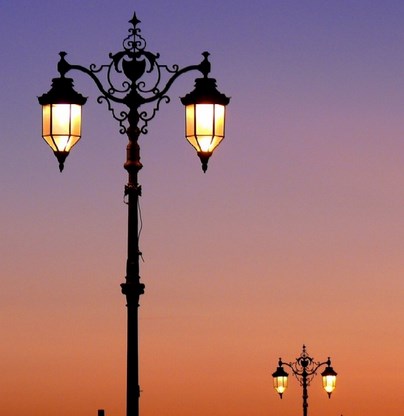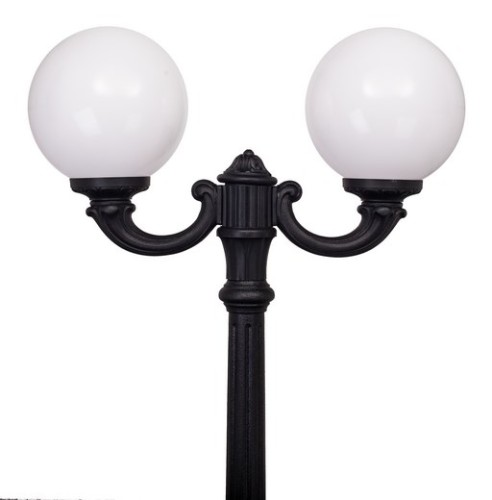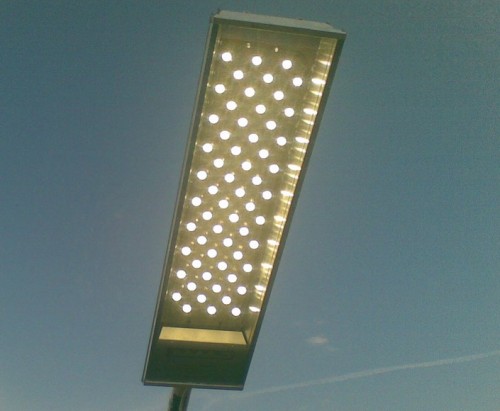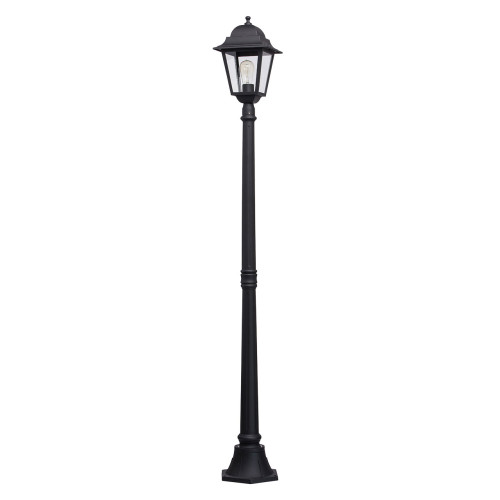Usually, street pillars have to put on household plots for its lighting. The technique of installing lampposts is a little different from the installation of the same pillars that are used to build a fence from the chain grid, or a wooden fence. There are various column options for the organization of lighting and fences.
Content
Moreover, some pillars will be able to perform these functions at the same time, if you consider several moments before installing them. For the elevated fence, the poles can be made from the segment of the steel corner, so we consider the variants of the lantern pillars of street. First, you will understand which posts are available on sale, and what differences they have.
What do lampposts make?
- Steel lamp poles. Cheap, if there is a massive production, but you can order a forced pole according to original design, and it will cost a lot. There are many design options even within the series, they have an average weight, if not galvanized or the quality of galvanizing is low, eventually start rust. Therefore, to increase the durability, they are most often painted with periodicity once a year. Otherwise, due to the subtleties of the walls, they may make it difficult for a couple of years. An interesting feature of the latest models is their ability to "develop", allowing, if necessary, replace lamps and even street lights on the posts without using the stairs.
- Aluminum lampposts. It is easier, but more expensive steel, they are not affected by rust, but in the paragraphs of collecting scrap metal, aluminum is expensive. Aluminum poles are more durable, but hardness can give up steel.
- Plastic or polymer lamppost poles. This includes pillars from composite materials. Not subject to rust, light, do not absorb moisture, rather durable, but may be very expensive. They are produced from electrical insulating materials, so in the event of an emergency will be safer than metallic, and energy leakage through the Earth If it is, only in very rainy days. At the moment it is the most promising version of the installation of street lighting on the poles.
- Concrete (reinforced concrete) pillars. Once it was the main type, as soon as they stopped massively install street lighting on a tree pillars. They differ in the greatest rigidity of all types, but also fragility too. Very difficult, for this reason, the tap is most often required. The cost of them, most often, low, resource compared to steel pillars is infinite - up to fifty years. They do not rust, do not require care after installation. However, the process of destruction is constantly and inexorably. Due to the fact that the concrete absorbs the water well, if there is groundwater on the site, it will be somewhat wet all the time, and when frost hit, the water inside will begin to freeze and create a set of stresses inside the post. Also, steel reinforcement, located inside the post, will rust over time, and when rusting is heaving to the sides, breaking the pillar.
- Wooden lampposts. It is practically not found on sale at the moment, but they can be made independently. Just like polymer poles, do not conduct electricity. By weight, if from a good tree, akin to steel columns, without proper treatments can rot, but this process will take a long time in any case. To relieve you can make them out of pine, then they can work out and easier steel, and cool cheaper. With independent production, they will come up cheaper and more reliable than all other options, and can also have a very original design. The easiest option is ordinary pine login, bold and impregnated with hot oil.
What are the lights for street pillars?
The correct choice of the street lamp on the pillar will effectively illuminate the necessary space. Incorrectly can turn out a waste of considerable money. In the case of the lamp of street lighting on the pillar, we are primarily interested, first of all, lamps of a flying type. Of these, you can allocate:
- Suspended lamps are a classic option. Suspended lights may not have a ceiling, as such, but only the lid protecting the lamp from the rain. She also works as a kind of deflector, directing the light down, to the base of the pillar.
- Spotlights are bright directional light lamps that do not have a ceiling. The case has, most often, seal by default, and the light source in them is surrounded by reflector. The projector street on the pillar is often equipped with motion sensors, which makes it possible to provide additional safety or energy savings.
- The ball is a very common variant of the lamp, disposed on low columns. The lamp the street ball on the pillar is a source of non-directional light, and therefore its effectiveness with a pillar height drops. Best of all, such lamps work at the height of human growth or just below. When there is a higher human growth, they already carry more decorative load.
Choosing a light source
- Incandescent bulbs are a classic version that gives warm light. They are cheap, but their effectiveness is very small. About 90% of energy is spent on heating the thread, and on the lighting - only 10%, if not less. For our purposes, they are not economical.
- Halogen lamps, they are energy-saving. Consume much less electricity with the same lighting brightness. A variety of halogen - neon lamps are often used for street searchlights on a pillar.
- LED light sources are not lamps. By virtue of its features, LEDs can also be used in the production of spotlights and sources of non-directional light. They consume the minimum amount of electricity and possess incomparable durability. Also, LED lamps can provide highlighting day, cold, warm white color, as well as any shades of the visible spectrum. If the column is equipped with a street LED lamp, the replacement of the light source will be needed very soon. Also, LED light sources can be equipped with solar batteries with batteries, which makes it even more to increase electricity savings.
How to put a lamppost?
There are two main options for installing a lamppost. In both embodiments, it is necessary to dig up a hole, and it is also recommended to pour it with concrete. Polymer mixtures have now begun to appear, which can subsequently displace it, as the polymerization time is somewhat less than even on the primary grasp of concrete.
Installation of the lamp column is folded into several stages:
- Defining the future place of the post. At this stage, it is better just in case to refer to the documentation for the site and make sure that the place selected for the installation will not only provide effective coverage of the required area, but not both underground communications. The distance between the columns should be chosen in such a way that the light spots from them do not overlap each other. The higher the post, the smaller the brightness of the light spot and the greater its dimensions. If the site is provided with a centralized gas, water supply system and / or heating, it is necessary to find out the location of the pipes. To install pillars near the border of the site or beyond its limits, it is necessary to contact the relevant organizations on this subject.
- Digging the pit for the installation of the pillar. If there is no ability to use the drilling rig, you can dig up with its manual brown or shovel. The pit should have dimensions in terms of at least 20 * 20 cm for temperate climate and at least 70 * 70 cm for a cold climate. Poam walls should be vertical. When installing pillars with fill with concrete, the pit is digging in terms of at least 20 cm larger than the diameter of the pillar, in order to free the place under the concrete. The depth of the pocket depends on the length of the post. Most often, if the pillar is buried in the ground, the depth of the pit is about 1/3 of its length. The depths of 2 m should be sufficient even for a six-meter concrete pillar. If there is no possibility when installing a pillar, it is worth making one of the walls of the pit, and not vertical. This will allow you to establish even a heavy pillar gradually immersing and leveling it into a vertical position. In the case of mounting a pillar on a support, the anesthemium is digging according to the dimensions of the existing support. If it is decided to bring electricity to the post under the ground, then you need to dig for the cable laying the trench to the installation site of at least 45 cm.
- Installing a pillar into a hole. If the base is not supposed to be poured with concrete, then the installation is to drive a pillar into a prepared pit. In this case, when installing long concrete and reinforced concrete pillars without a crane, it is quite difficult to do, but perhaps collecting special goats. At the correctly completed stage, 2 posts are leveled vertically during the drive. If one of the walls of the pit was made of a stepped, after the post alignment, the earth is falling asleep and tamper. When installing a wooden pillar in the ground, the immersible end should be covered with bitumen or defiled.
It is much more reliable to pour the pit with a concrete solution. Score a pillar will not be required, and a concrete support will reduce the center of mass of the pillar. For high-quality pouring, the pole should be fixed in the center of the pit in a vertical position, after which it is possible to fill the pouring of the pit with concrete solution. After the fill, leave the post recorded for a day per day, while the concrete does not grab.
If a finished base with an anchor is used to set the post, then after alignment of the base vertical, the Earth is falling asleep with the subsequent rambling. It is also possible to pour cavities between the base and the edges of the pit with concrete. After hardening the concrete, the pillar screws down to ankra. An anchor method is convenient for subsequent replacement of columns, since it is necessary to unsubscribe four nuts.
If it is supposed to supply meals for flashlights not by air, and under the ground, referred to the cable channel in the concrete fill. To do this, it is enough to use the plastic tube of the required diameter. Just in case, it is better to glue the ends of the pipe with a tape or something to shut something so that the concrete cannot score her if something goes wrong. For underground wiring, armored cable type VBBSHB is best. Its steel strip, in addition to protecting the cable from external influences during earthworks, will provide high-quality grounding.













